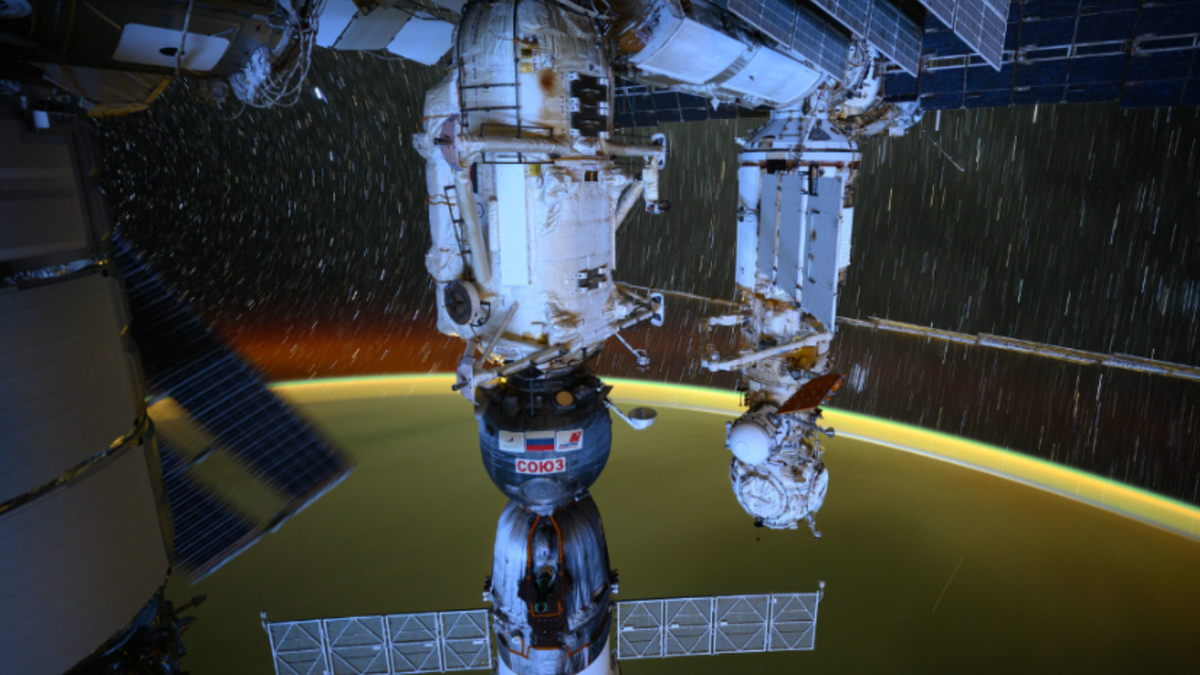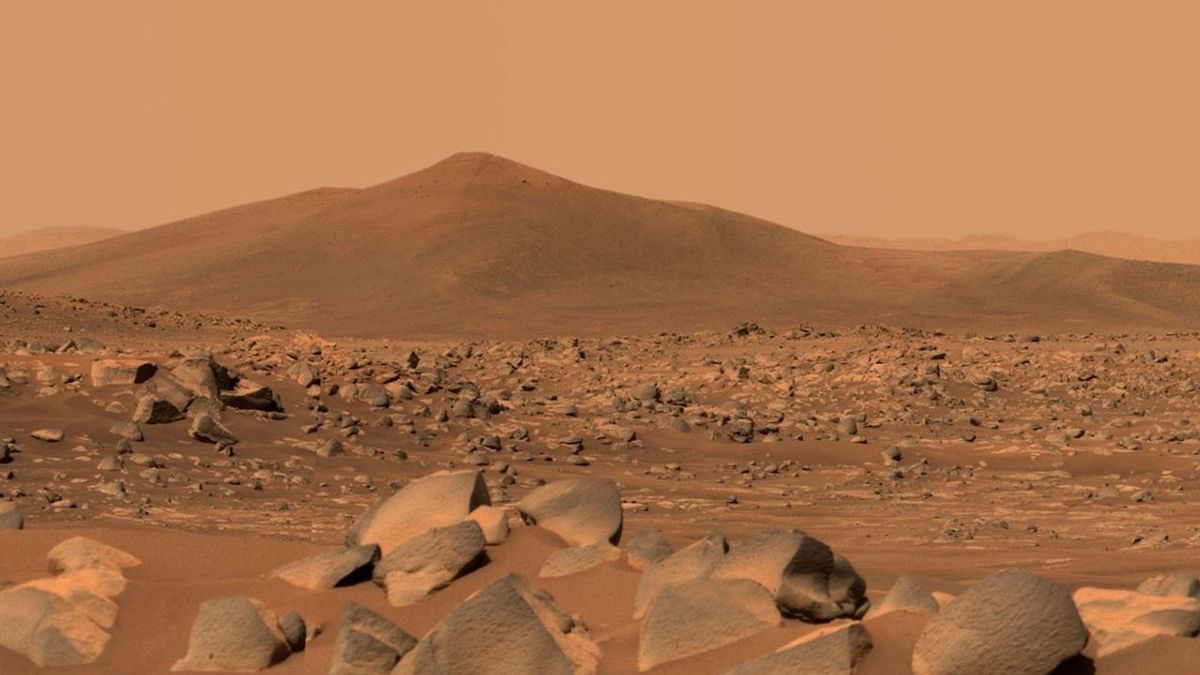Nationwide, more than 60% of the water we use comes from rivers, streams and lakes. For example, New York City gets 90% of its water from the Delaware Basin. Philadelphia gets almost 60%.
These waterways are continually under threat from pollution, development and climate change.
To illustrate this, CBS News' environmental correspondent David Schechter, photographers Chance Horner and Justin Sherman and producer Laura Geller spent one week traveling down the Delaware River from upstate New York to the Bay by kayak, canoe, car and foot.
Rivers are getting warmer. That's bad for fish and the people who make a living trying to catch them
The Delaware River begins in New York's Catskill Mountains. On a tributary called the Beaver Kill, the water temperature is rising. That's a problem for the fish and people like Brian Sheppard.
Sheppard said learning to fish saved his life. Now, as a fishing guide on the Beaver Kill, he shares his passion for flyfishing with clients. But as climate change makes the river warmer, he's not sure how much longer he'll be able to do that.
"I would say that there's a ticking clock of 5 to 10 years where we're gonna have to start to branch out and find other water, so I don't necessarily know that it's a long-term thing," Sheppard said.
Flyfishing is a $750 million industry in the U.S. As the climate continues to change, one study found 87% of rivers studied in America and Europe are warming – 70% are losing oxygen, which is threatening fish and the environment and economies that revolve around them.
"The insects are triggered by different temperatures as well, and so if the water temperature climbs too high, the bugs don't hatch, the fish aren't there to eat them, so it affects the whole chain of events that goes on to the eagles, the ospreys, the bears, the rest of the life that we have up here," Sheppard said.
Jeff Skelding, executive director of Friends of the Upper Delaware River, said helping the fish also helps the people. His organization is trying to help restore the flow of the water by removing sediment and clearing old dams. This cools down the water and makes it more hospitable to the fish.
"This is not just a story about fish, it's also a story about people. ... All kinds of recreational activities, increasingly, are supporting the economies of these communities," Skelding said. "So, these small tributaries are the lifeblood of the whole system. We've got to keep them clean to keep everything else clean."
We need rivers, but some are under threat
Adam Shellhammer is one of the leaders of the non-profit American Rivers, an organization that brings attention to the threats waterways face in our country.
As Shellhammer paddled down the Upper Delaware River with CBS News environmental correspondent David Schechter, he explained how rivers and waterways are essential.
"Our base-level needs are food, shelter, water, and rivers provide, in this area, drinking water to over 17 million people, this river alone. So, from a very basic survival need, we need to protect our waterways," Shellhammer said.
American Rivers puts out an annual list of the country's most endangered rivers. This year, it includes the Mississippi for poor flood management and the rivers of southern Appalachia – where extreme storms destroyed critical infrastructure.
The Upper Delaware was on the list in 2007. But through the restoration work of American Rivers and other groups, today it is far healthier.
"It's a lot of dedicated work that goes into it, so it's also inspiring when you see that it can be fixed," Shellhammer said.
When Native American tribes protect the environment, we all benefit
To the Lenape Indian Nation, the Delaware River is their ancestral home, and many members dedicate their lives to protecting it.
It's why they fought against a dam that would have flooded the river and fought to ban fracking in the Delaware Basin. Now they're organizing efforts to stop the proliferation of giant warehouses under construction along the river.
"(Activism) is central to everything it means to be Lenape, to live in harmony with everything around you," Lenape Chief Adam Waterbear DePaul said.
DePaul and his mother, Clanmother Shelley Windamakwi DePaul took CBS News' David Schechter for a paddle down the Delaware to see why a healthy river is so important and what they're doing to protect it, for all people.
As they approached the Delaware Water Gap, where the mountains close in and the river turns, Clanmother Windamakwi DePaul explained they always sing an honor song to their ancestors.
"I think that's the spot where you can really feel the ancestors in the sacredness. Once you (are) between those two mountains ... It's where I do my prayer, it's my church," she said.
Reflecting on the importance of the tribe's activism, Chief Waterbear said, "If we collaboratively fail … not to sound romantic, but all of this is going to be gone."
The Delaware River has cultural significance, and also historical significance
Rivers played a major role in the development of this nation – because that's how people and goods got around.
Alex Robb is a re-enactor who interprets history for visitors at Washington Crossing Historic Park.
Robb said George Washington's crossing of the Delaware River, and subsequent attack of the British camped in Trenton, New Jersey, in 1776, was critical to the founding of the United States.
"If that moment does not happen, there is no America," he said. "There's no way you can underestimate the significance, the importance of that moment."
To prevent disasters, governments buy and demolish flood-prone homes. But some people don't want to leave
Steve Rodriguez lives in a flood plain. His home in Bucks County, Pennsylvania, near Neshaminy Creek which feeds into the Delaware River, has been hit with six catastrophic floods in the last 30 years.
In that time, the state has bought and demolished nearly 3,000 homes because of flooding. While Rodriguez was offered a buyout, which many of his neighbors took, he turned it down. "I'm rooted in," he said. "It's like a big oak tree. I ain't going nowhere."
An estimated 40 million Americans live in floodplains.
Instead of having empty land to absorb the water, it ends up in people's houses. Critics say allowing this kind of development is dangerous and fiscally irresponsible.
Incomplete buyouts, when not everyone leaves, make neighborhoods vulnerable to flooding and the repeated costs of rebuilding, which are usually paid for with tax dollars.
"That sad story is going to be repeated over and over and over again and that is not fair to anybody," said Maya van Rossum, an activist for responsible development practices who is known as the Delaware Riverkeeper.
For more on flooding and the people impacted, click here to see the full story.
Raw sewage releases into waterways disproportionately impact disadvantaged communities, CBS News analysis shows
In Philadelphia, the Delaware widens out to accommodate ships and urban development. Just like in cities across the country, pollution is a problem.
Jerome Shabazz runs a nonprofit in Philadelphia that advocates for protecting nature in urban spaces. He showed CBS News' David Schechter Cobbs Creek, a tributary of the Delaware, where his organization picks up trash.
"We're making a difference. I mean, if we go back and look at the before and after shots, you'll see that just the short period of time that we were here is going to make a difference," Shabazz said.
But it's more than just trash that's causing problems.
In these older cities, sewage and rainwater run through the same pipe, on the way to a water treatment facility. When there's too much rain, the pipes can overflow into local rivers and streams, sewage included.
Now, we have heavier downpours from climate change that old sewer systems were never designed to handle.
Nationwide, there are over 7,000 of these combined sewer overflow locations, where raw sewage is flowing into local waterways. A CBS News data analysis shows more than half of those locations are in communities where people are marginalized, underserved, and disproportionately burdened by pollution.
The analysis of the now-archived Climate and Economic Justice Screening Tool and the overflow locations also found lower income, minority communities are twice as likely to have sewage dumping into a river or creek.
"We really can't accept this on a basic human level as being normal," Shabazz said.
Water that Americans rely on for drinking and irrigation under threat from taint of saltwater
Between New Jersey and Delaware, the river gives way to the Delaware Bay, where the water is salty. There lies a growing problem.
Rising sea levels from climate change are forcing salty water further into farmer's fields, a phenomenon called saltwater intrusion.
It's already happening on Paul Cartanza Jr.'s farm, along the Delaware Bay, where some of his soil is getting too salty to grow corn.
"We went to irrigate, two days later we noticed we had an issue because it means that the corn started to turn brown, started to die when you put salt on it. It started to die," Cartanza said.
A major new study from NASA found salty seawater will infiltrate drinking and agricultural water supplies in about three out of four coastal areas around the world, including America's coasts, by the end of the century.
Scientists are studying Cartanza's farm and developing ways to plant more salt-tolerant crops, as soils change.
"I just want to know what is happening in the soil and how fast the intrusion is coming in," Cartanza said.
Kate Tully, a researcher from the University of Maryland, has found salt-tolerant plants in a patch of field bordering the farm, indicating the salt is coming in and trying to turn the farm into a marsh.
"The plants are telling you the story, even though we're doing all this chemistry to try to figure out what's happening in the soil, the plants are telling you the story. All you have to do is look at these plants and say, oh, these do not belong on a farm," she said.
Some solutions include switching to salt-tolerant crops or enrolling in programs that pay landowners to convert farmland to wetland habitat.
A study from the University of Delaware estimates saltwater damage to farmland could exceed $100 million dollars.
In order to keep farming, Cartanza has mowed buffer zones between the marsh and his corn.
"God has only made so much land. And if we keep losing land to a lot of different things, it's going to be hard to feed people," he said.
White House responds to judge who found cause to hold Trump administration in contempt
Does the IRS have the power to revoke Harvard's tax-exempt status?
FSU shooting suspect to face first-degree murder charges, police say
.png)
 German (DE)
German (DE)  English (US)
English (US)  Spanish (ES)
Spanish (ES)  French (FR)
French (FR)  Hindi (IN)
Hindi (IN)  Italian (IT)
Italian (IT)  Russian (RU)
Russian (RU) 








Comments